Azerbaijan 3 – 6/2014
It was Saturday, June 14. No sign of the ferry which reportedly takes about 14 hours from Baku across the Caspian Sea to the port of Turkmenbashi in Turkmenistan and reportedly another four hours to get through customs. Our five-day transit visa through Turkmenistan would begin on Monday, June 16. It wasn’t looking good. Well, you know what they say about making lemonade from lemons. With our truck safely parked in the guarded customs compound, we walked out and caught the bus into town.
Baku is the capital of Azerbaijan, situated on the southern tip of the Abşeron Peninsula overlooking the Bay of Baku, along the western shore of the Caspian Sea. It lies on an ancient trade route, (part of The Silk Road), from the Central Asian steppe towards Europe, being the main port that received trade from the east. Heading westwards from Baku, merchandise would either be transported north through the Caucasus Mountains and thus to the north of the Black Sea or would travel due east, into Turkey towards Istanbul.
Historically, Baku is a city founded upon oil. For its inexhaustible fountains of naphtha, it owes its very existence, its maintenance and its prosperity. The immense output in crude petroleum from this single city far surpasses that in any other district where oil is found. By the beginning of the 20th century almost half of world production was being extracted in Baku.
There are reports of oil being sourced from open wells around Baku as early as the Middle Ages and evidence of petroleum being used in trade as early as the 3rd and 4th centuries. Information on the production of oil on the Abşeron Peninsula can be found in the manuscripts of most Arabic and Persian authors. There is even a passage in the Scriptures: “—the rock poured me out rivers of oil.”
The following paragraph from the accounts of the famous traveler Marco Polo is believed to be a reference to Baku oil: ‘Near the Georgian border there is a spring from which gushes a stream of oil, in such abundance that a hundred ships may load there at once. This oil is not good to eat; but it is good for burning and as a salve for men and camels affected with itch or scab. Men come from a long distance to fetch this oil, and in all the neighborhood no other oil is burnt but this.”
One observer wrote: “Oil is in the air one breathes, in one’s nostrils, in one’s eyes, in the water of the morning bath, (though not in the drinking water, for that is brought in bottles from distant mineral springs), in one’s starched linen – everywhere. This is the impression one carries away from Baku, and it is certainly true in the environs.”
Needless to say, Baku has been an important and multicultural hub in the Caucasus region throughout history, and it’s actually quite a nice city. On the skyline the beautiful Flame Towers are the tallest skyscrapers in Baku at 190 m, (623 ft.). They are dramatic anytime of day, but especially at night when they look like huge flames or multicolored rainbows leaping into the sky. We took time to wander the streets of the old inner-city which has been designated as a UNESCO World Heritage Site. Of particular interest was the fortress-like walls which may have guarded the old caravanserai, a stopping point along the Silk Road.
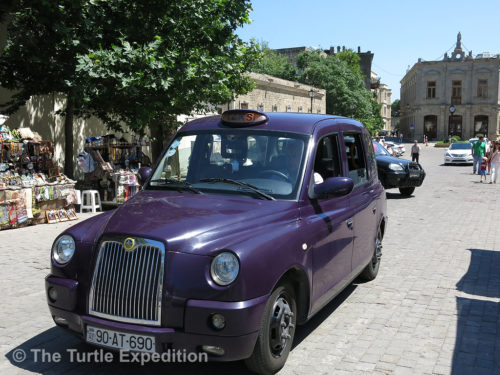
British automaker Manganese Bronze Holdings painted its normally black taxis violet at the behest of Azerbaijani President Ilham Aliyev. Azerbaijan plans to have 3,000 London-style cabs on the streets by next year.
Aside from the Flame Towers, the most notable landmark is The Maiden Tower, also a UNESCO World Heritage Site. It is recognized as the symbol of the city. It has a mystique and hoary history that are linked to two periods, though none conclusively established. The story we liked the best was the legendary tale of the king willing to force his daughter to marry a man she didn’t love. She escaped by asking her father to first build a tower for her, and when it was finished, she committed suicide by jumping from the top.
Another version holds that the king on his return from his war campaign found that his wife had given birth to a daughter instead of a son. He became furious and ordered the killing of his baby daughter. However, the baby’s nanny took her away to a secret place where she grew up to a beautiful lady. At age seventeen she got engaged to a lover. At this juncture, the king chanced to see her, wanted to marry her and therefore took her away and kept her in the Maiden Tower. The girl’s lover was furious with this turn of events and he managed to kill the king. (Don’t you loved these legends?) He then ran to the Maiden Tower to rescue his lover. However, when the girl heard the sound of footsteps approaching towards the tower, she thought it was the king coming to get her and she immediately committed suicide by jumping down from the tower. These things never have a happy ending.
The streets of the old inner-city were lined with antique stores that tempted us, but the decisive question is always; “How are you going to get it back, and when you do, where are you going to put it in your house that is already full with travel treasures?” There were enough beautiful plazas and little coffee shops to keep my mind off buying stuff we didn’t need.
- The beautiful Flame Towers are the tallest skyscraper in Baku at 190 m, (623 ft.). They are dramatic any time of day, but especially at night when they look like huge flames or multicolored rainbows leaping into the sky.
- No photo credit available. Downloaded from YouTube.
- No photo credit available. Downloaded from the internet.
- No photo credit available. Downloaded from the internet.
- Being an important international trade center between East and West, these fortress walls probably evolved from the original caravanserai where merchants could safely exchange goods.
- Beyond the main entrance to the caravanserai there was a patio where traders could gather and beyond that, storerooms and perhaps even stables for their animals. Today coffee shops and gift stores attract tourists.
- This ancient water fountain did not seem to be in use and I am not sure we would have drunk the water without first running it through our Everpure (www.everpure.pentair.com) water filtration system.
- The Maiden Tower is a Baku landmark, a much-loved symbol of the city and of Azerbaijan. It looms dark and enigmatic, looking out to sea from the southern edge of Baku’s old, walled city. Its history is steeped in mystery.
- Cobblestone streets in the old part of Baku were lined with intriguing antique shops.
- Though we were tempted by the many treasures of Baku, we had to ask ourselves, “how would we get them home and where would we put them if we did.”
- The interesting old buildings of historic Baku were in stark contrast to the modern city on the horizon.
- Despite the modern appearance of parts of Baku, manual labor is still the way many things are done as this country extracts itself from the grips of Russia.
- Without the use of a tractor or a dump truck, these guys were shoveling construction debris into bags which would then be hand loaded onto a horse-drawn cart and taken out of town to dump.
- We poked into this little shop to watch women cleaning a new batch of wool, picking out the sticks and burs.
- We didn’t have time to search for the main market, but this little store had everything we needed; fruit, milk, a smiling face and even some fresh bread.
- Monika couldn’t resist stopping by to chat with this guard outside the Swiss embassy, giving her a chance to speak some Swiss German for a change.
- The beautiful parks and plazas in downtown Baku were certainly a reflection of its growing economy.
- Monika takes a quick rest in art turned into a seat. The design of Baku’s central park & plaza were world-class.
- Back at the port there was still no ferry and the big trucks continued to line up.
- These monster DAF & MAN long-distance transport semis were carrying their maximum load.
- We returned from Baku to our camp in the customs yard while we patiently waited for the mysterious ferry to arrive.
- Meanwhile, the friendly Turkish truck drivers made themselves at home, preparing their hot meals on their portable kitchens and taking the expected delays in stride.
- Gary had a good laugh with the Turkish truck drivers. Ferry? What ferry? Never mind. What’s for dinner?



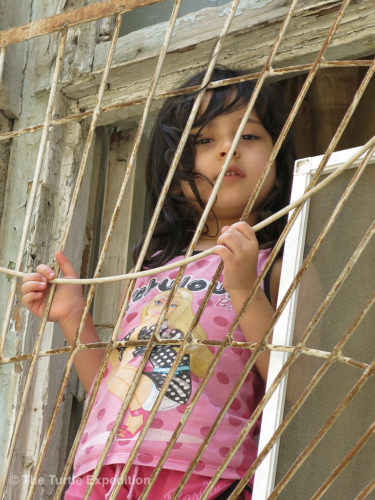
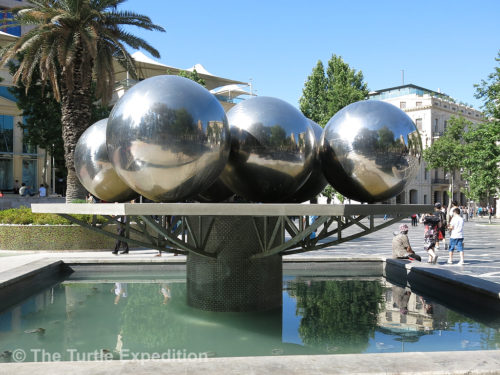
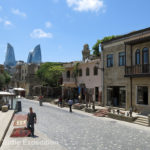
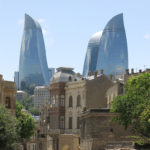

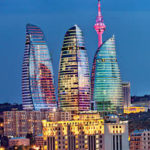
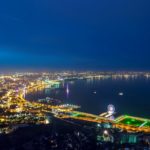
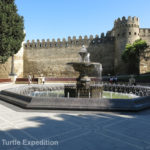
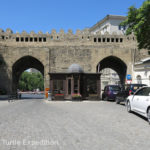
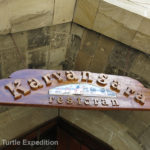
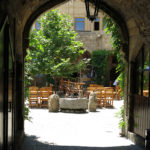
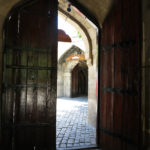
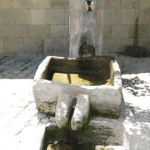
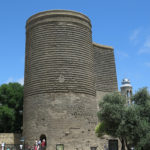
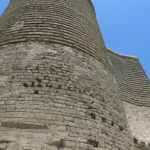
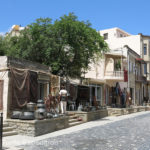
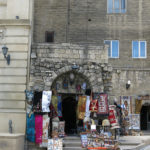
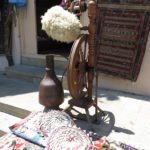
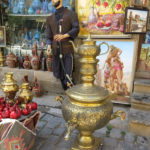
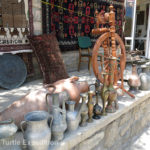
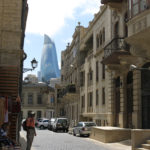
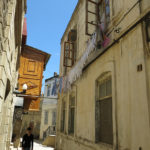
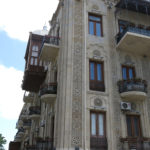
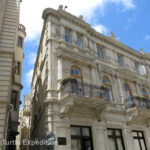
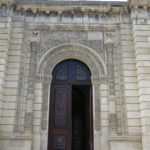
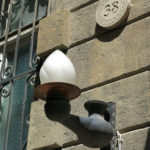
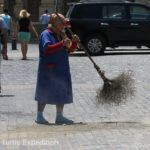
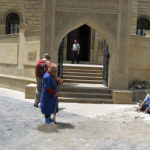
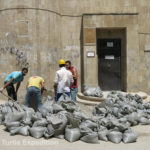
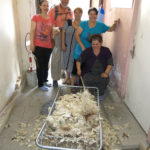
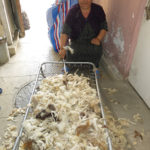
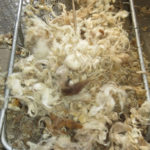
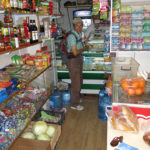
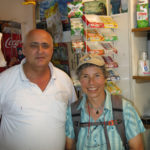


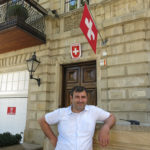
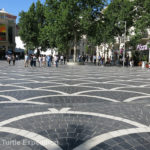
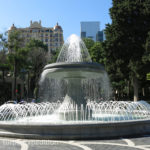
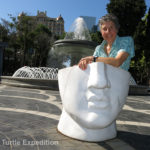
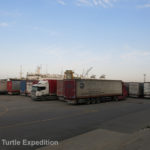
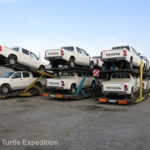
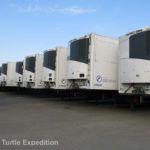
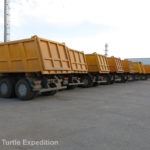



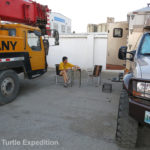
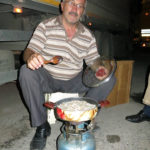
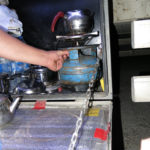
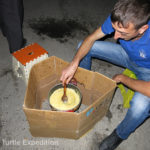
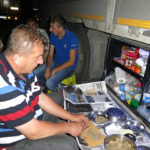
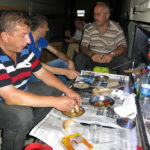






Leave a Comment